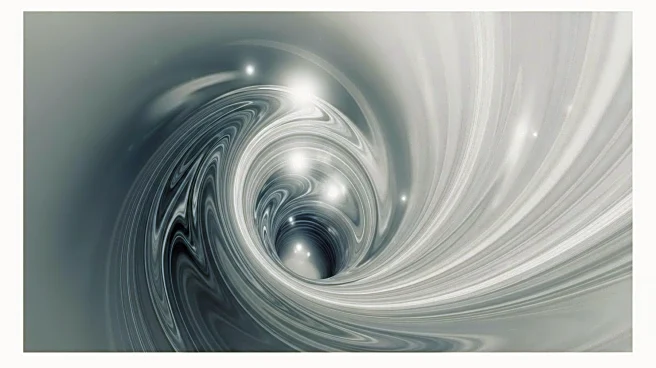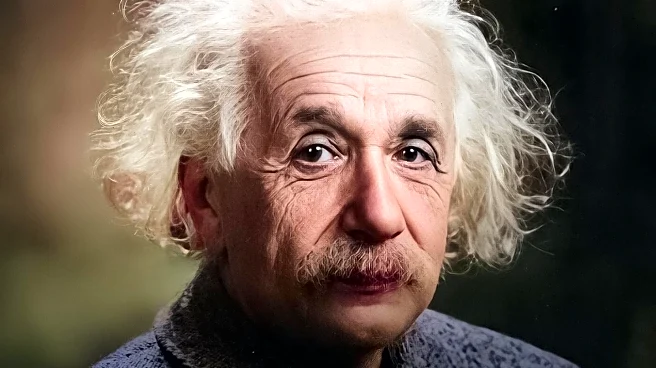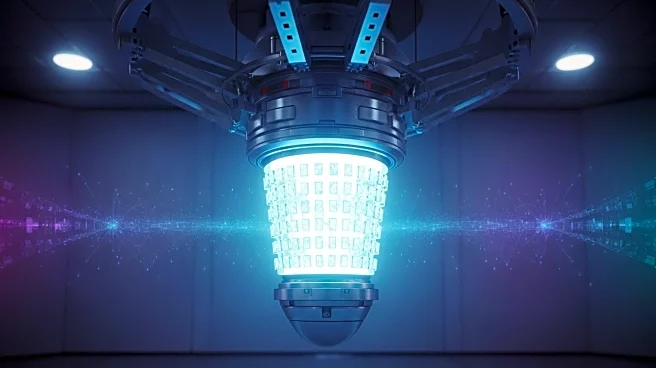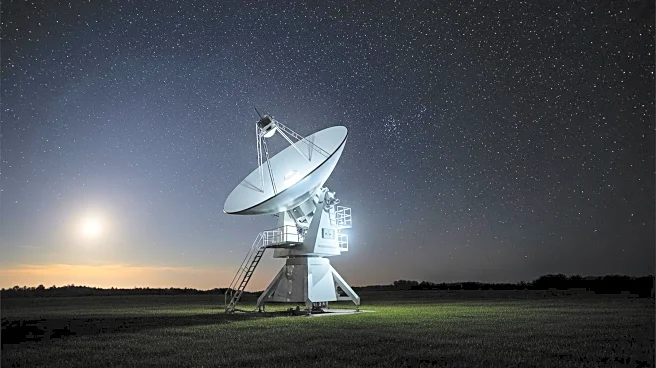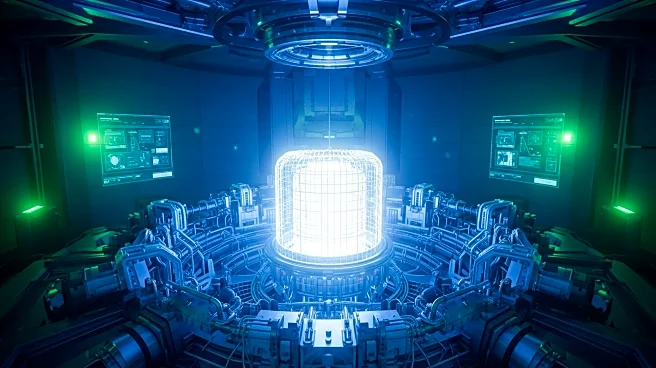What is the story about?
What's Happening?
Theoretical physicists at the University of British Columbia have developed a model that simulates vacuum tunneling using a two-dimensional superfluid. This research builds on the 1951 theory by physicist Julian Schwinger, which proposed that electron-positron pairs could be created from a vacuum through quantum tunneling. The new model substitutes a thin film of superfluid helium for the vacuum and uses the superfluid's background flow to mimic the massive electrical field required in Schwinger's theory. This approach allows for the spontaneous creation of vortex/anti-vortex pairs, which spin in opposite directions. The findings, published in the Proceedings of the National Academy of Sciences, provide a framework for conducting direct experiments on this phenomenon.
Why It's Important?
This research is significant as it offers a practical method to study quantum tunneling, a process that is central to quantum mechanics and field theory. By using superfluid helium, the study provides a tangible system to explore phenomena that are otherwise inaccessible, such as those occurring in deep space or at the universe's inception. The work also advances the understanding of superfluids and phase transitions in two-dimensional systems, potentially impacting various fields including physics, chemistry, and biology. The variability in vortex mass discovered in this study could lead to revisions in existing theories, including Schwinger's original concept.
What's Next?
The next steps involve conducting direct experiments based on the theoretical model to observe the predicted vortex/anti-vortex pair formations. These experiments could validate the model and further refine the understanding of quantum tunneling processes. The research may also inspire new studies into the mass variability of vortices and its implications for other quantum phenomena. As the model provides analogs to cosmic events, it could lead to broader applications in understanding the universe's fundamental processes.
Beyond the Headlines
The study highlights the potential for analog systems to provide insights into complex quantum phenomena. While analogs have limitations, they offer a unique perspective on processes that cannot be directly observed. This research underscores the importance of interdisciplinary approaches in advancing scientific knowledge, as it combines elements of condensed matter physics and quantum gravity.
AI Generated Content
Do you find this article useful?
